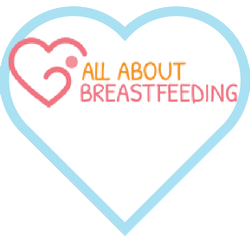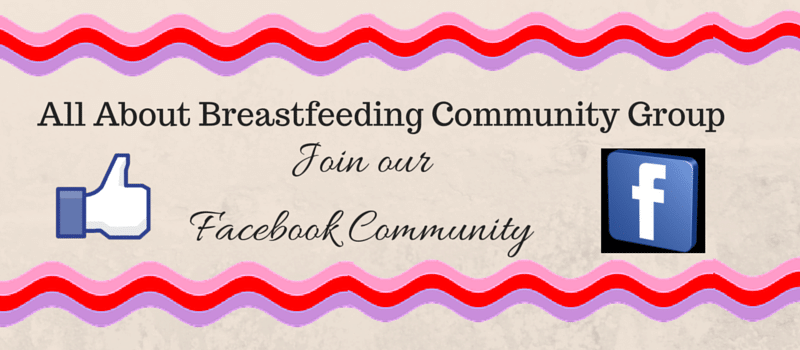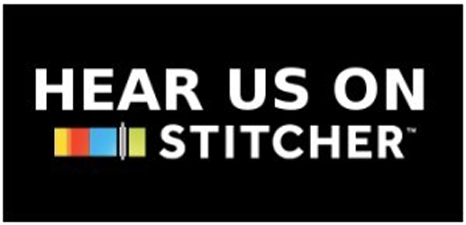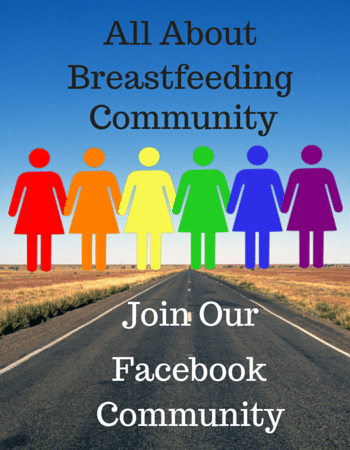As many of my regular listeners know, what I see and do in my daily work as an IBCLC, often motivates me to talk about a particular subject on this show. As I went about providing private lactation consults this week, a few things kept popping up with the moms I have helped with breastfeeding challenges. This week we are going to talk about nipple shields.
I will first tell you exactly what nipple shields are. Then we are going to talk about the reasons for using one. I am going to end with a story of a family that I worked with recently that illustrates the improper use of a nipple shield to help you understand why it is sometimes not a good tool to use. The outcome was not good. I will explain to you why. This will help illustrate exactly why I strongly urge you to use them under the guidance of an IBCLC. I will then lay out to you a scenario of the proper use of a nipple shield. I will take the same breastfeeding challenge and show you, how, with the proper guidance you can use a nipple shield and have a successful breastfeeding story.
A nipple shield is a breastfeeding accessory or a tool that you can use to help overcome common breastfeeding challenges. It’s made of ultra-thin, soft, flexible clear silicone and is worn over the mom’s nipple when during a breastfeeding. There are holes at the tip so milk can flow through to baby’s mouth. Nipple shields come in several different sizes and usually are either a cone shape or a round shape. Since moms breasts and nipples are different sizes and shapes and babies oral cavities are different from one baby to the next, it is optimal to have a proper nipple shield fitting to increase the likelihood of your baby being able to use the shield correctly and get good milk transfer.
They are considered to be a short-term solution and should really be used under the guidance of a lactation consultant. Years ago, they were not sold over the counter and you typically could only get them when working with a lactation consultant.In fact, the paperwork that comes with most nipple shields have a Warning on them which say: It is important to use a nipple shield under the direction of a healthcare professional or lactation consultant. Nipple shields are now sold over the counter, on the internet and in many stores that carry baby and breastfeeding items. It is because of this reason, that my colleagues and I see as many situations that nipple shields have helped as we have seen situations that they have hindered breastfeeding. Improper use of the nipples shield can make it more difficult to breastfeed and there are too many times where nipple shields use have been the cause of a mom not being able to continue breastfeeding.
I tell moms that using a nipple shields should be used under the guidance of a lactation consultant and that they should be considered a short term solution. Nipple shields are not intended to be used all the time and for the duration of your breastfeeding relationship. There are times that yes, absolutely , that long term use may be the only reason and the only way a mom is able to continue to breastfeed. These circumstances are not the norm. Typically, once we have solved most breastfeeding challenges, nipple shields are no longer needed.
During this Pandemic, more moms are trying to fix breastfeeding issues all on their own. Rather than working with a lactation consultant, more moms are purchasing nipple shields and are scrambling to try to figure it all out. Again, some are quite successful, but too many are not and the reasons are common ones, which is what led me to do this specific show.
Nipple shields can be a great tool and can really help moms get through some rough spots with breastfeeding.
Here are the most common reasons that nipple shields are used:
a premature baby who has difficulty latching
flat or inverted nipples
When breastfeeding is causing nipple damage
poor milk transfer – your baby is at the breast, appears to be sucking, but is not transferring a sufficient amount.
As time goes on and mom is experiencing an over-active let-down a nipple shield can be helpful.
Now this is not a complete list as it is just the most common ones.
Let’s expand on these reasons a bit further:
Premature babies. – We don’t like to use nipple shields in the first week of life for most babies, however, they can be a valuable tool for babies who are unable to latch on at all. The teat that is cone shaped or round may help them achieve a latch. Sometimes they can achieve a good latch, but keep slipping off and are unable to maintain good suction at the breast. For these reasons, a nipple shield can work wonders. Your baby can perhaps get a partial or a full feeding directly from the breast and perhaps not need the bottle for all or part of their feeding.
The Full term baby: .Some babies, for whatever reason, just do not show any signs of wanting to or being able to suck from the breast. As an IBCLC, I like to have exhausted all my efforts by keeping babies skin to skin, by hand expressing some milk and see if this interests them into trying to latch on. I have moms try and offer some milk via a syringe or spoon or cup. Perhaps this gives the baby some energy, some hydration and gains a very sleepy baby some interest in latching on. Sometimes this is all they need. However, after trying various techniques and the only other option is a bottle, then I would suggest a nipple shield. If the baby does latch onto the shield, this is great. The next step is to ensure that your baby can transfer milk using the shield. It does no good as far as a feeding is concerned, if a baby can latch on with the help of the shield and they can stay on with the help of the shield, but they barely do any sucking. We need a baby to latch on and to breastfeed and to transfer optimal milk in order for a mom to go home using this tool.
Flat and Inverted Nipples: This can get a bit tricky because I find a fair amount of moms are told there nipples are flat or inverted or don’t stick out far enough and this is why her baby is not latching on. Actually I find that this is not the case more often than not and this mom and baby just needed some good quality help with position and latch. Perhaps her nipples do fall int these categories. I still find that with individual help and lots of patience and learning a few tricks, most babies are able to latch on and breastfeed well. Then we have the very small percentage of moms that this truly is the reason her baby is not latching on and a nipple shield is a wonderful tool to use as this is the only way her baby will breastfeed. The thing is, I like to rule out and exhaust all efforts before moving to this tool. It can undermine a moms confidence in her breasts and nipples and her ability to breastfeed. And weaning from the nipple shield is not always so easy, so we want to be sure it is definitely needed before getting the baby started on it.
Oral cavity challenges such as: tongue or lip tie, palate issues or babies who fatigue easily because of other health issues. A nipple shield can be a great tool to use to help babies at breast and for moms to have the experience with breastfeeding her baby. For some moms, this is a huge motivator as they can see their babies breastfeeding and this helps them emotionally as they work through their breastfeeding challenges. – even if their baby is only able to latch on for a few minutes. It helps them see the light at the end of the tunnel.
Now that we have covered in greater detail the most common situation nipple shields are used for, I am going to tell you about 1 consult that I recently which will help to paint a picture as to why nipple shields made the breastfeeding situation worse and is the #1 reason that breastfeeding was not able to continue for this mom and baby.
Sienna is a first time mom who gave birth 3 weeks into this Pandemic. For 3 weeks, the world around her had been shut down. Visits to her doctors office was made with just her alone as her partner was not allowed to accompany her. She was incredibly anxious about her pregnancy, the health of her baby as well as what the birth would look like. Thank goodness, She was able to have her husband in the room and overall feels her birth went well. The hospital was able to accommodate much of her birth plan wishes, except for having her doula with her. She said her husband was great and the nurses for the birth were very at tentative and in her words: “all was good with the world.”
However, when it came time for her postpartum and recovery, she felt that she did not get the attention she needed as staff were in and out of her room quickly and not as often as she needed them. Sienna understood the circumstances and at the time, was fine with this, except until about 2 weeks later when she realized that she really did not get the breastfeeding help she needed.As she spent about 10 minutes listing all of her grievances,. I understood her feelings and told her that I wished things could have been different for her. I find that we need to work through some of this frustration before a mom is ready to move on, at least for the time of the consult, so we can get some work done. She blames the Pandemic and while this certainly had an impact on her experience, I felt that, in her case, it would be helpful for her to know that this is not an uncommon experience even without the Pandemic. I explained to her that while I understood her feelings, her experience was not much different than it might have been even before the Pandemic. I know the hospital she gave birth in and they are very quick to offer formula or other tools like bottles or syringes or nipple shields long before they took the time to really work with the mom and baby. While I did not want to dwell on this, I felt it might help calm her and reduce her anger – and it did. I then moved on to verbalizing to her my true thoughts – which are: okay, that was then and this is now… so what can we do from this point on to make things better for you. With all of this out of her system, Sienna was ready to move on.
She was basically told that her nipples were flat and when her baby did not latch on and feed for the first 5 hours, she was given a nipple shield. Sienna just did not know what she did not know. No one told her how to use the shield, how to tell if her baby was transferring milk, that she should be using a breastpump, that she still might need to supplement. Sienna and her husband were honestly just so happy that after 5 hours of struggling, all of a sudden her baby latched onto the shield and stayed there. This gave her great comfort to know that her baby could breastfeed. She also could see the relief on her nurses face when her baby latched on, so in her mind, this was all good news. She very happily left the hospital 24 hours later with little to no feeding plan. She was given A bag filled with free formula, one nipple shield and instructions to feed her baby every 3 hours during the day and 4 hours at night.
Since her baby, Adam, had been latching on with the nipple shield at the hospital, she continued to do this at home. Sienna figured they would wait until the first pediatric visit, and once she was told her baby was doing well, she would start trying to breastfeed without the nipple shield. She had tried a few times at the bare breast and Adam just either sat there not opening his mouth or he would open, she would bring him onto the breast and he would push away and cry.
She had the appointment when Adam was 4 days old. She was devastated to find that he went from 7.8 oz to 6 lbs. 9 oz. This is quite dangerous as it is basically a 1 pound weight loss in 4 days. The Doctor asked her a few questions about output and sleeping behavior and frequency of feeding. He than lectured her, and said that her baby was feeding frequently enough, but she must not have any milk “there” because he lost too much weight. Adam was dehydrated and had no energy. In her words, she said she was: read the riot act and told that she can still breastfeed, but only for 5 minutes on each side “if she felt like it” and then she was to give him 2 oz of formula every 3 hours.
I met with her virtual when Adam was 11 days old. He would not go to the nipple shield anymore ( which was her reason for the consult). He was averaging 2 1/2 oz – 3 oz at every feed. Sienna was happy he was already back to his birth weight, peeing and pooping a lot and seemed to be a very happy baby, except for the crying and pushing and fighting that he did at every attempt to breastfeed.
During our virtual consult, I listened to her story and then discussed with Sienna how we were going to work together to bring her baby back to the breast. I explained to her that because he fights so hard, we were going to do this for the purpose of him just being there, on her skin, close to her breast, just for pure enjoyment and not necessarily to feed. I shared tips and explained the reason behind my recommendations for her spending lots of time, with a full baby, on her chest. We needed to keep him close, connected, but not push a hungry baby, too hard to breastfeed.
Sienna pushed me: what was the purpose of that? how long will it take for Adam to learn how to breastfeed? She had not been pumping at all and her breasts she described as quite soft. After a lot of questions and a full assessment, I was quite positive about her ability to boost her milk volume and I told her this. However, when she pushed for timelines of back to breastfeeding and full supply, I answered her honestly. Every mother and baby pair are unique. Babies have their own temperaments and while moms are anxious to make things happen, we need to offer her baby time at breast, allow her to dribble milk so he could lick the milk and strike a balance between what she wanted to happen and her following her babies cues. Given that I had ruled out any anatomical reason why her baby could not latch on, I explained to her that this was more a matter of her building her supply and showing her baby that the breast was a comfortable place to be. I also told her I was very, very encouraged that her baby would be breastfeeding. This was going to be a work in progress and that it could easily take 2-3 weeks.
Sienna listened to my info about the need to pump 7-8 times a day to build her supply. She also tried to put Adam to the breast while I watched. He fought and fought and cried so hard. Sienna was very discouraged. Having been down this rode before with many moms, I remained positive and listened and validated her feelings, understood her being hesitant and assured her I would be there for her. Sienna said that perhaps she could pump 2 or 3 times a day and that she could possibly manage putting Adam skin to skin a few times a day. I was like, that’s fine. It’s a great start.
2 days after our consult, Sienna sent me an email that was so filled with anger and frustration and sadness, that I was glad she accept my phone call later that day. She basically said that after our consult, she realized that it was just too much for her. She was angry that no one explained to her the ins and outs of using the nipple shield. She feels like she lost valuable time. She spoke to her husband that night. He was there for most, but not all of the consult. She said that it would be too hard for follow the care plan and he quickly agreed with her. She felt that right now her baby was happy most of the time, until it came to feeding time. She felt like she was causing him trauma trying to get him to breastfeed and she tried pumping a few times and hated it.
Now, this was a quick version of our time together and there was more discussion, but the end result is:
Her nipples were nice and everted and had someone taken the time to work with Sienna and Adam the first 24 hours, this may be a different story.
Had someone explained to her the proper use of the nipple shield, sat with her to explain how she could tell if Adam was transferring milk, she never would have let him spend 5 days at the breast with little to no milk transfer.
Had she been on a different care plan, Adam never would have lost so much weight. She would not have had such an awful first pediatric visit and she would not have felt such guilt and negative emotions leading her to feel like she was the worlds worst mother.
Had someone told her that she would need to pump when using the nipple shield, particularly in the first week, she could have built up a good supply. Had someone told her that newborns don’t typically take 2 oz at a feeding, she would not have spent the first few days frightened and feeling like a bad mother so much so, that she would push and push and push him to drink the 2 oz each time.
What could have been different here? How could this have been a positive experience for Sienna? Well, when used properly and with the guidance of an IBCLC, Sienna would have been in a place to work on her breastfeeding challenges, while building her milk supply and at the same time, keeping her baby boy Adam well fed. Pretty soon and with the proper care plan and right guidance, she would be a happy breastfeeding mom.I hate, yes hate, when moms are given a nipple shield, but without the proper guidance and no follow up.
Had I been working with Sienna in the hospital and had I exhausted all efforts in trying to get Adam to breastfeed, and I deemed the nipple shield would be an appropriate and temporary tool. Here is what I would have done:
Made sure the nipple shield was the right fit for both mom and baby.
At the time of our consult, Sienna was using a shield that was meant for a 10 pound baby. Another big mistake.
Made sure she knew how to use the shield properly and how she could tell he was transferring milk.
I would have talked to her about signs regarding feeding cues and signs of satiation and proper output.
I would have explained to her the need to and the reason for pumping and given her info on this.
I would have encouraged her to visit with her pediatrician within 24 hours of hospital discharge and I would have given her a referral to an IBCLC in private practice.
If her baby was not transferring milk when using the shield, I never would have sent her home with one. The care plan would have been different.
Absolutely nothing on this list was done.
Let’s say all the right things were done.
With this excellent information before discharge and with Sienna seeing not only her pediatrician with 24 hours, but also an IBCLC with the next 24-48 hours, any breastfeeding challenges could have been assessed and a proper feeding plan would have been given to ensure appropriate intake would have been given.
In this scenario – Sienna would have excellent education about using the nipple shield, so I would feel good about this.
She would have had a good aftercare plan, with her seeing the appropriate providers in the appropriate timeline.
This would mean that she and her baby would not fall through the cracks.
Breastfeeding mothers who are using nipple shield need to be followed up very closely. We can avoid the tragedy that occurred with Sienna and Adam. By the time she met with me, she was so traumatized and there was no way she was going to let her baby cry even for a second or struggle even for a minute at the breast trying to get fed.Sienna is a good mother and she need to know her baby was gaining and growing and unfortunately she was unable to work with me to change things. She told me she was just too afraid to even try. I gently offered a few other options which I feel would not cause her or Adam any stress, however, she turned it down. I absolutely understand her trauma. I respect her feelings.
I am not in the business of trying to talk a mother into doing something with her body that she does not want to do. I am not in the business of being pushy with a mom to get her to work on breastfeeding. I understand why she felt the next few weeks were going to be too difficult for her. I am just angry at the system and very sad for Sienna as she did not have the opportunity to meet her breastfeeding goals. In the best of circumstances, breastfeeding takes time, commitment, patience and perseverance for most new mothers. This is even more so, when you have struggles.
My hope, and you know I always have hope for you… my hope is that if you ever find yourself using a nipple shield, you will remember this show and you will be sure to not go it alone. If you know of a friend right now who is using a nipple shield, please send her a link to this show. Please, please ask for help from an expert. We are here to help you. We work with this all time. It is our job to assess every single mom and baby pair. See what it is that you need and do all we can to keep you building your supply, keeping your baby well fed and ensuring we do all we can to help you reach your breastfeeding goals. Getting help means that you don’t have to deal with the anxiety of 5 days later finding out that your baby has lost too much weight and that your breasts have not gotten the message that they need to make milk for your baby. We can have your nipple shield use turn out to be a very positive experience.
Your Online Breastfeeding Class
Learn how to breastfeed – Be comfortable. Be confident.
The learning continues well beyond the average breastfeeding basics class that is 60-90 minutes. In this class, we have over 15 hours of audio lessons, combined with many hours of videos to help support what you are learning. We cover breastfeeding and medication safety, what to do if your baby does not latch on, common breastfeeding challenges, tongue tie, premature babies, building a good supply, returning to work and pumping. Take a look at the list below and follow the link to the class page so you can see more specifics of what is covered. I want to ensure that we got you covered and that you have great support well beyond the newborn days.
- Using your pregnancy time to prepare for breastfeeding
- Tips on how to prepare your home for a newborn
- Specific details about the first 24 hours after birth.
- Exactly what to expect the first two weeks after birth
- What can you do if your baby is not latching on
- Common and not so common breastfeeding challenges
- What you can expect over the next few months
- Returning to work as a breastfeeding/pumping mom
- Pumping and storing your milk
- When to begin pumping and building your freezer stash
- How to make a smooth transition to postpartum life
- Lessons dedicated to partners and breastfeeding knowledge.
- Breastfeeding and the 1 year old
- Breastfeeding the toddler and beyond
- Tandem nursing
- Breastfeeding through a pregnancy
- Medication and mother’s milk
- Weaning
Once you register for the class, you have immediate access to:
- Audio Lessons
- Videos
- Educational handouts
- Helpful checklists
- Our “members only” group
- Weekly group LIVE Q&A sessions
Gain confidence in breastfeeding.
Expert advice from Lori J. Isenstadt, IBCLC who has over 25 years of experience in maternal health and lactation. I will help you navigate the ins and outs of breastfeeding.
Listen anywhere and anytime. Imagine not having to sit in a classroom or stare at a screen. You can learn all about breastfeeding while going for a walk, driving to work or running errands, traveling on a plane, train or bus. Because you can download the audios, learning is easy and convenient. Get ready to learn anytime whenever it’s convenient for you and your partner. You can be cooking dinner together and listening to the class. Perhaps relaxing together in the evening in your comfy clothes. You can learn together. Easy access to all class materials. Your class never expires. You’ll be able to listen and download the materials at your convenience.
You are not alone!
Once you are a student in the breastfeeding class, you have regular access to ongoing support for the whole time you are breastfeeding. You can have your questions answered by Lori J. Isenstadt, IBCLC, in our private group as well as our weekly live Q & A sessions. Just check out the Bonuses below to see how I provide you with ongoing support..
Exclusive Bonus #1
Immediate access to a private group for class students only. I will be answering your questions 5 days a week.
Exclusive Bonus #2
Invitation to join our weekly Q & A session with Lori and other students.
Exclusive Bonus #3
Need additional help? *25% discount off a private consult – for students only.
*If you are in the Phoenix metro area. use this link to schedule your Office or Home lactation consult.
*If you are out of the area, use this link to schedule a Skype call
Do you have a question about the class before you purchase? Send it to – aabreastfeeding@hotmail.com
 Register for the Breastfeeding class
Register for the Breastfeeding class
http://www.aabreastfeeding.com/audioclass
Additional ways to connect with me:
Like us on Facebook HERE:
http://bit.ly/2dNPlsC
Follow us on Twitter HERE:
@breastfeedingaz
http://bit.ly/2BfEIJ2
Follow us on Pinterest HERE:
https://www.pinterest.com/lorijisenstadt
Subscribe on iTunes the All About Breastfeeding show HERE:
https://apple.co/2FJGwsV
Lori J. Isenstadt, IBCLC
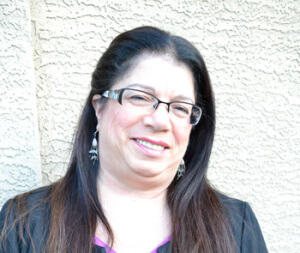 Lori Jill Isenstadt, IBCLC is a huge breastfeeding supporter. She has spent much of her adult life working in the maternal health field. Once she became turned on to birth and became a childbirth educator, there was no stopping her love of working with families during their childbearing years. Lori became a Birth doula and a Postpartum doula and soon became a lactation consultant. She has been helping moms and babies with breastfeeding for over 25 years. Lori founded her private practice, All About Breastfeeding where she meets with moms one on one to help solve their breastfeeding challenges. She is an international speaker, book author and the host of the popular itunes podcast, All About Breastfeeding, the place where the girls hang out. You can reach Lori by email at: aabreastfeeding@hotmail.com or contact her via her website: allaboutbreastfeeding.biz/contact
Lori Jill Isenstadt, IBCLC is a huge breastfeeding supporter. She has spent much of her adult life working in the maternal health field. Once she became turned on to birth and became a childbirth educator, there was no stopping her love of working with families during their childbearing years. Lori became a Birth doula and a Postpartum doula and soon became a lactation consultant. She has been helping moms and babies with breastfeeding for over 25 years. Lori founded her private practice, All About Breastfeeding where she meets with moms one on one to help solve their breastfeeding challenges. She is an international speaker, book author and the host of the popular itunes podcast, All About Breastfeeding, the place where the girls hang out. You can reach Lori by email at: aabreastfeeding@hotmail.com or contact her via her website: allaboutbreastfeeding.biz/contact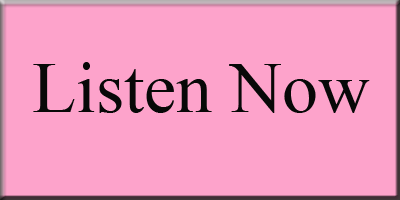
your email address will not be published
